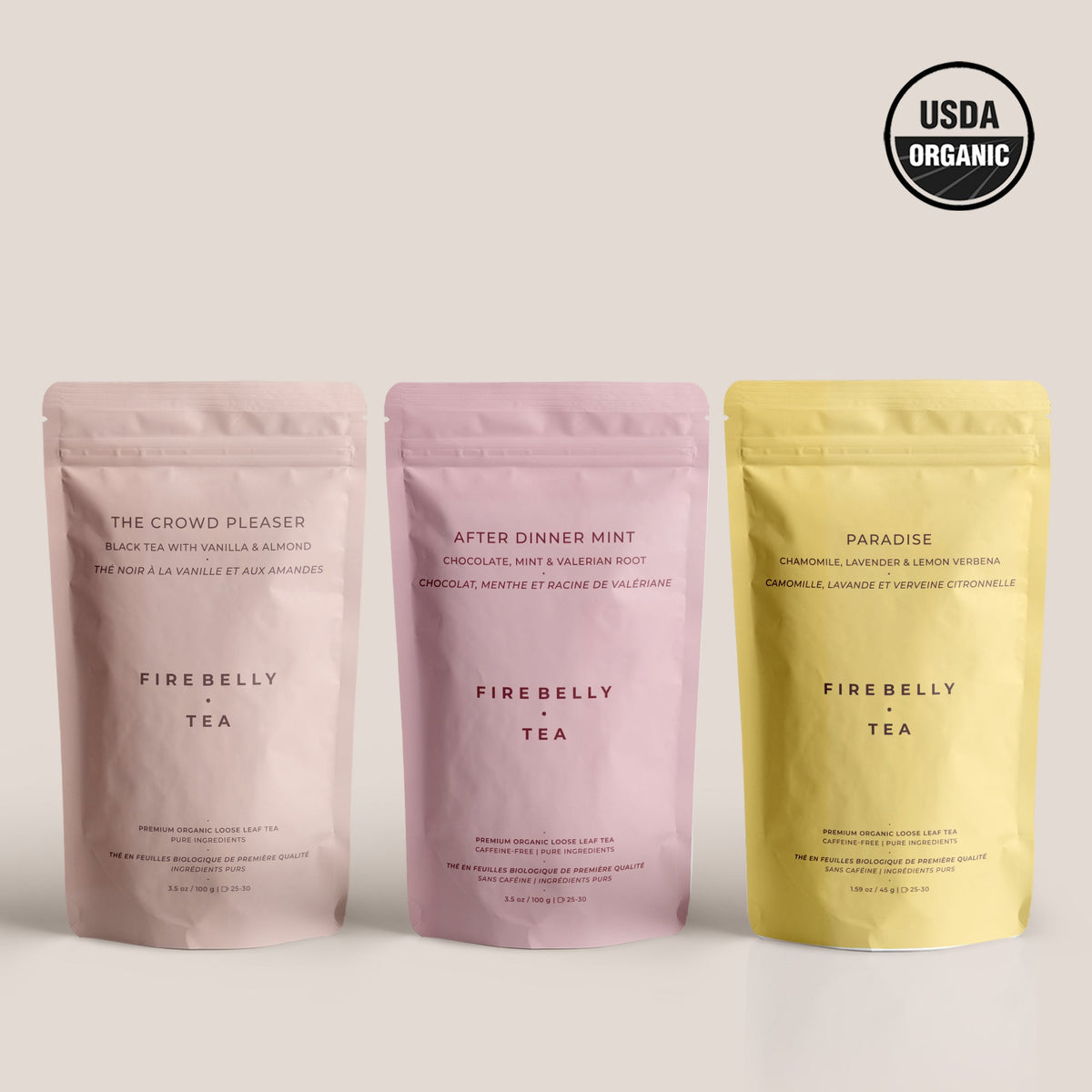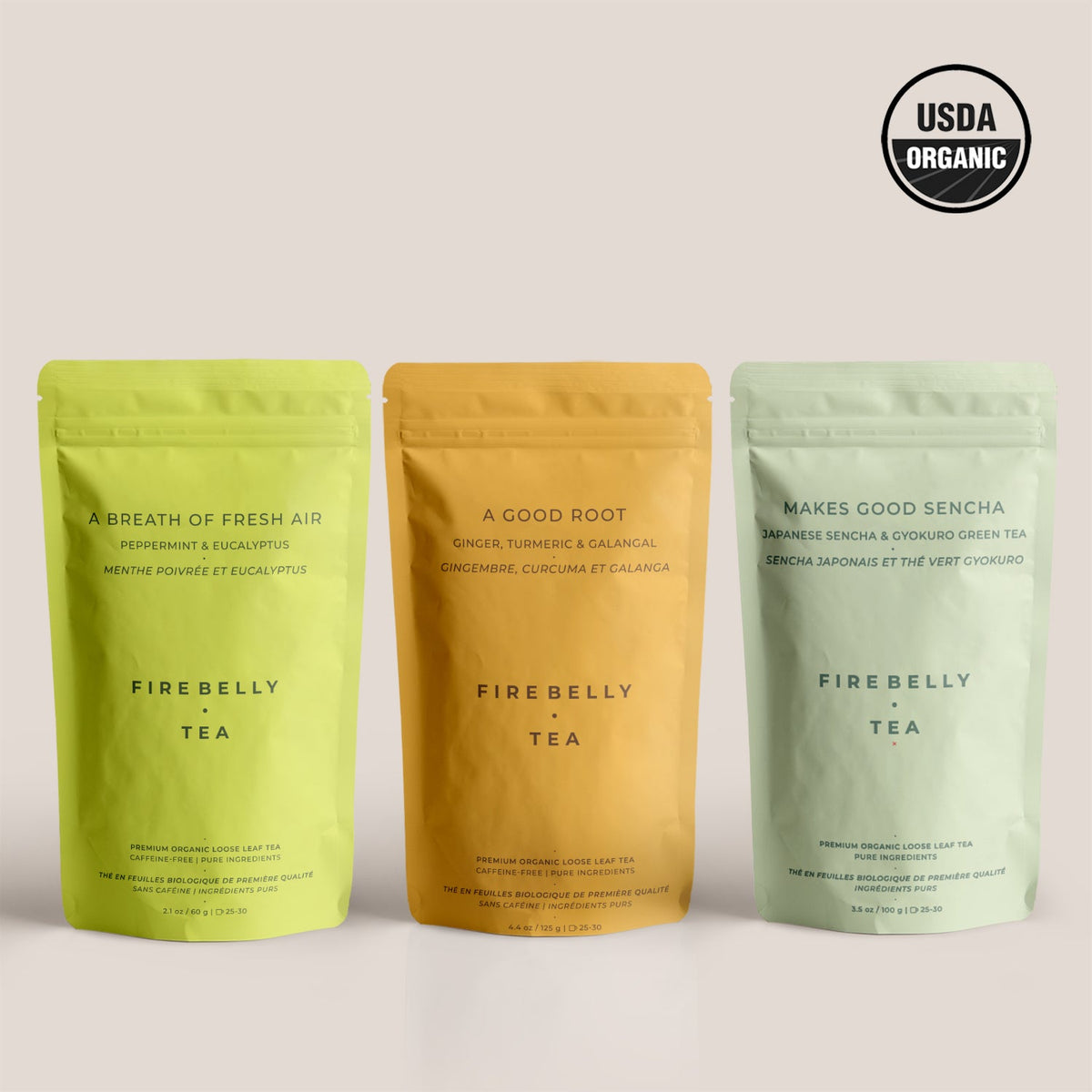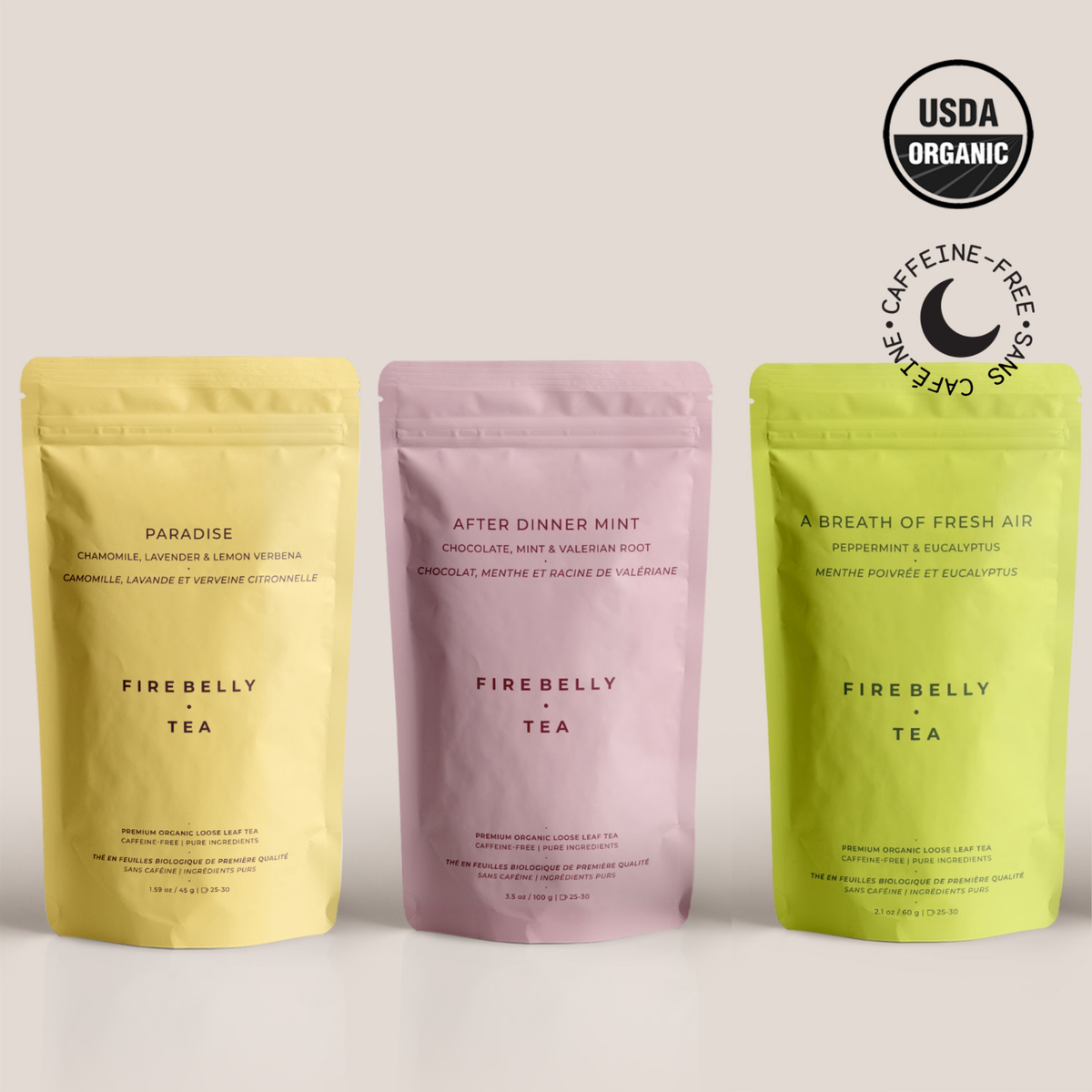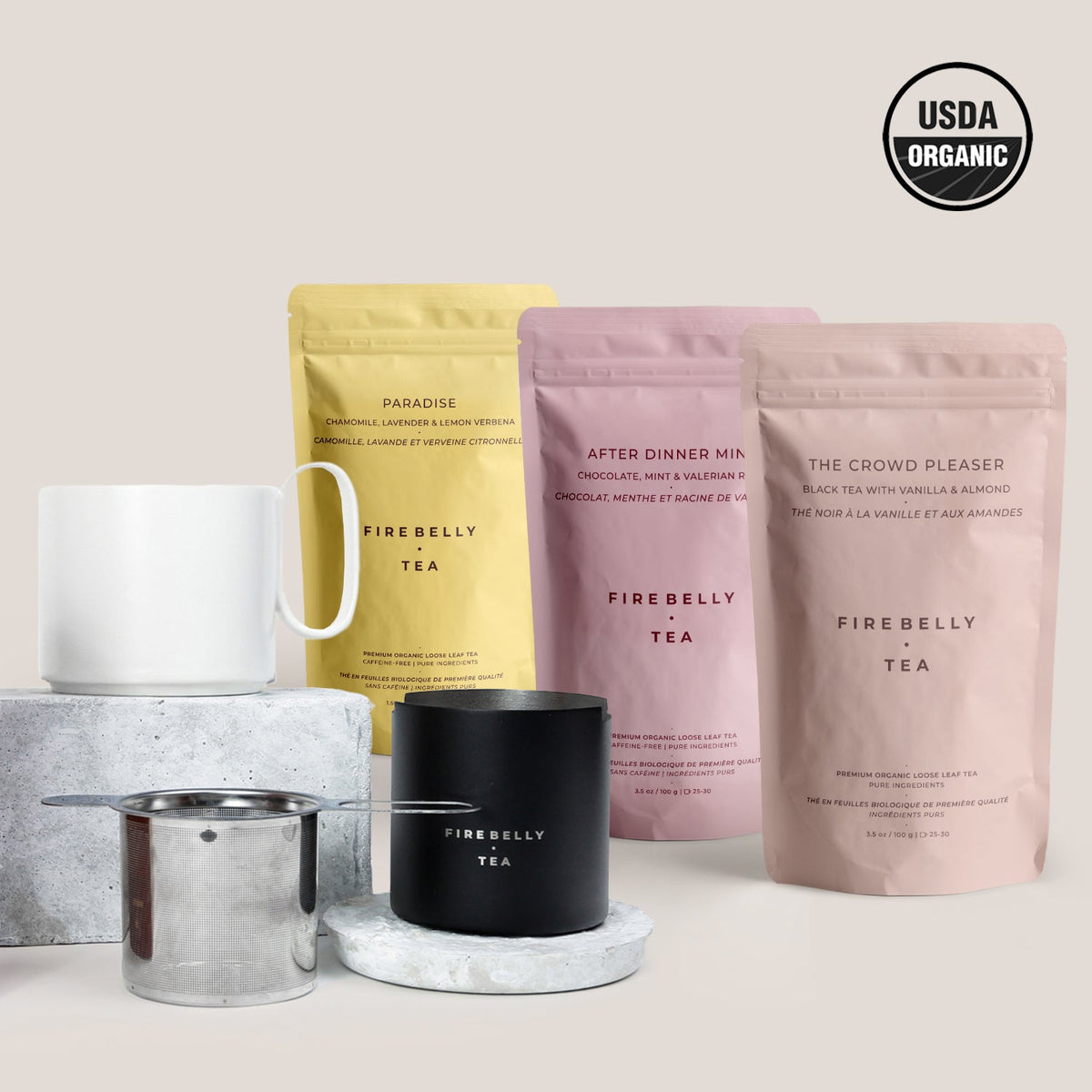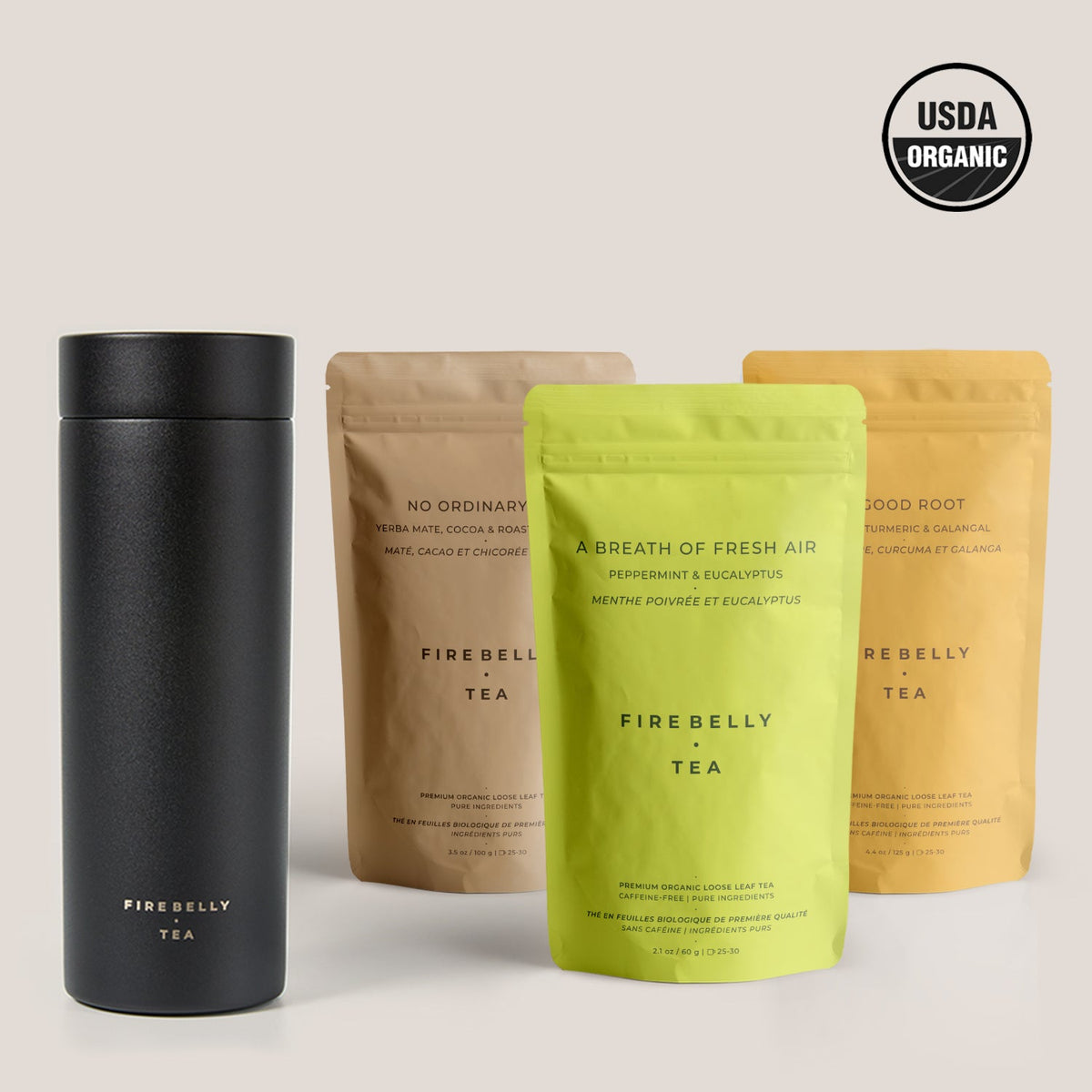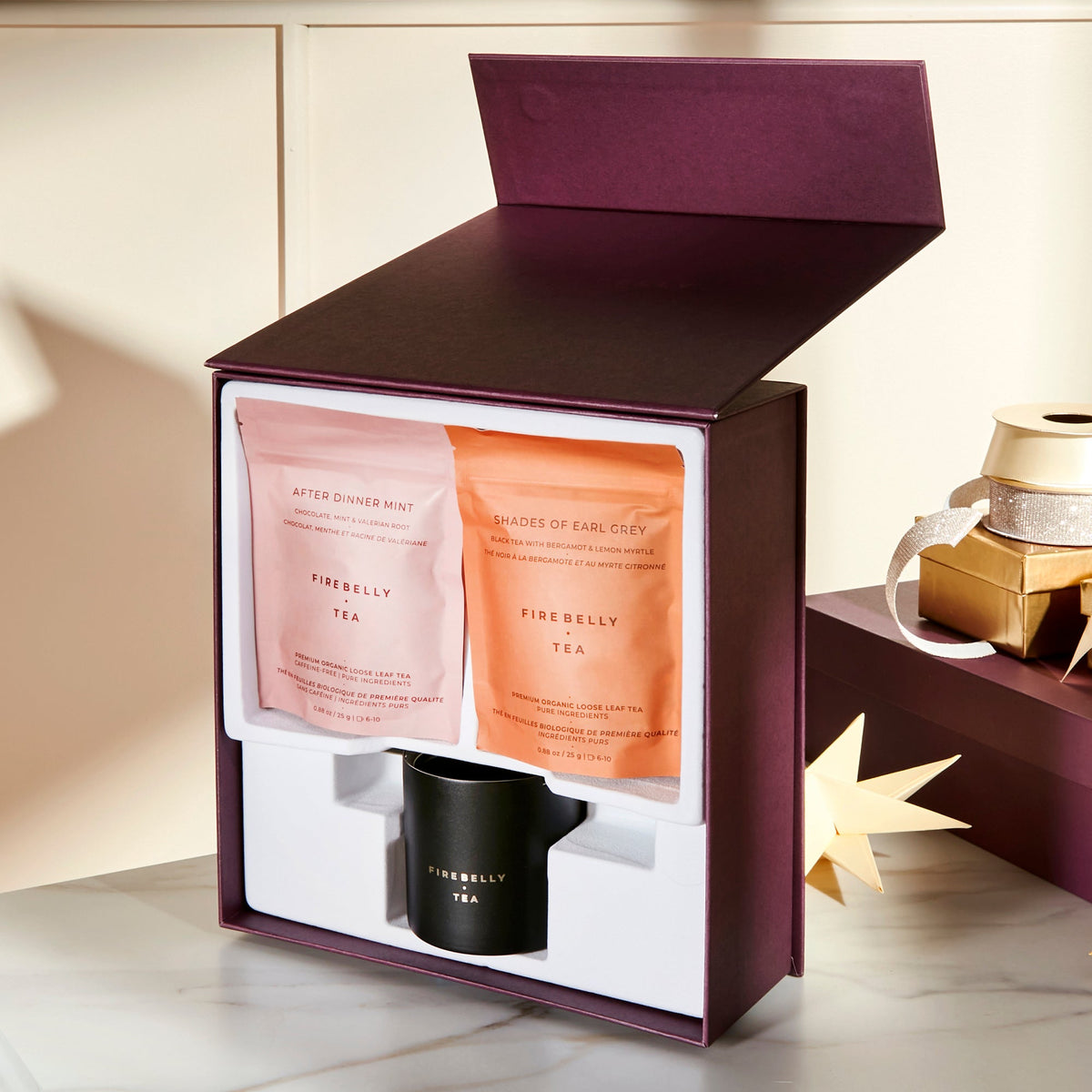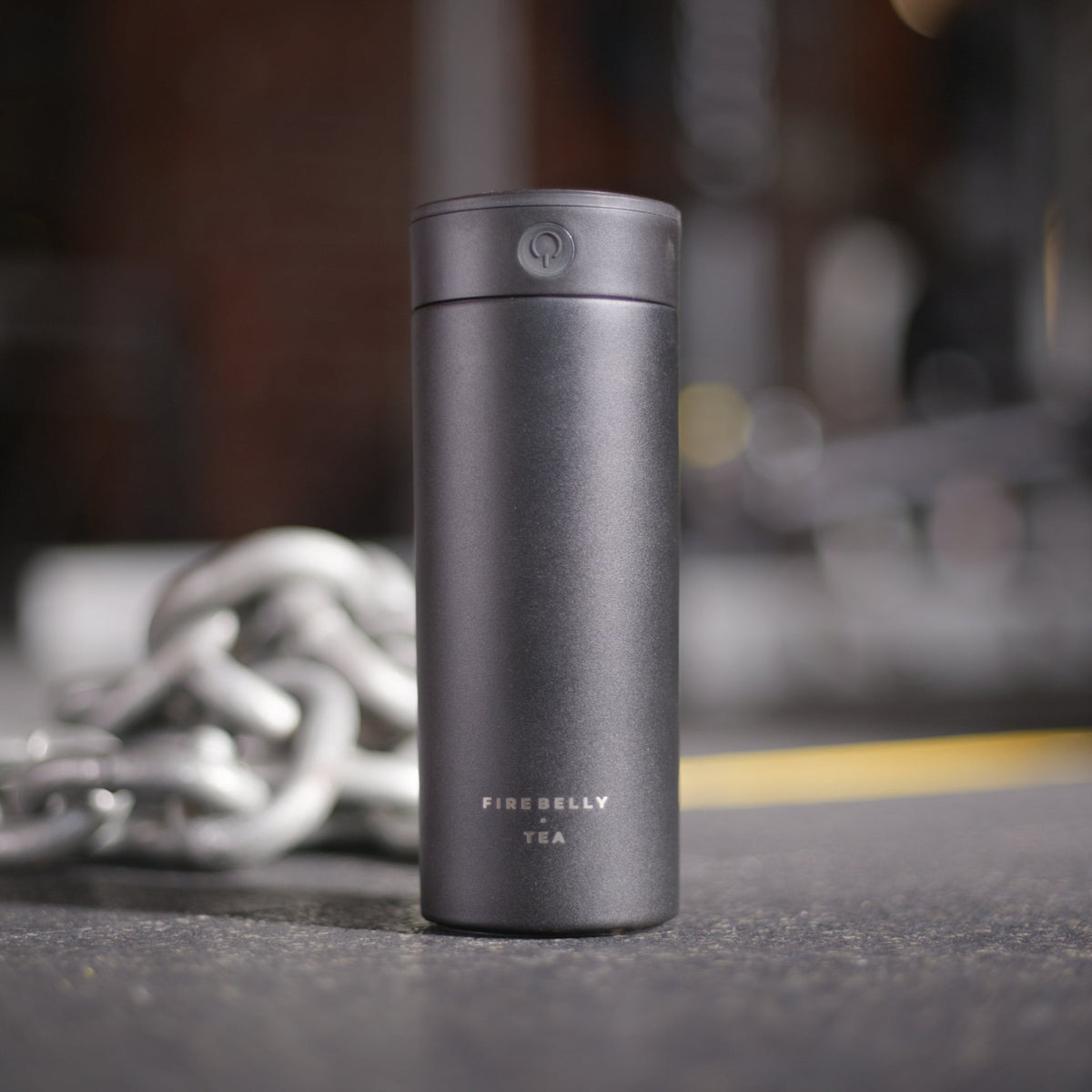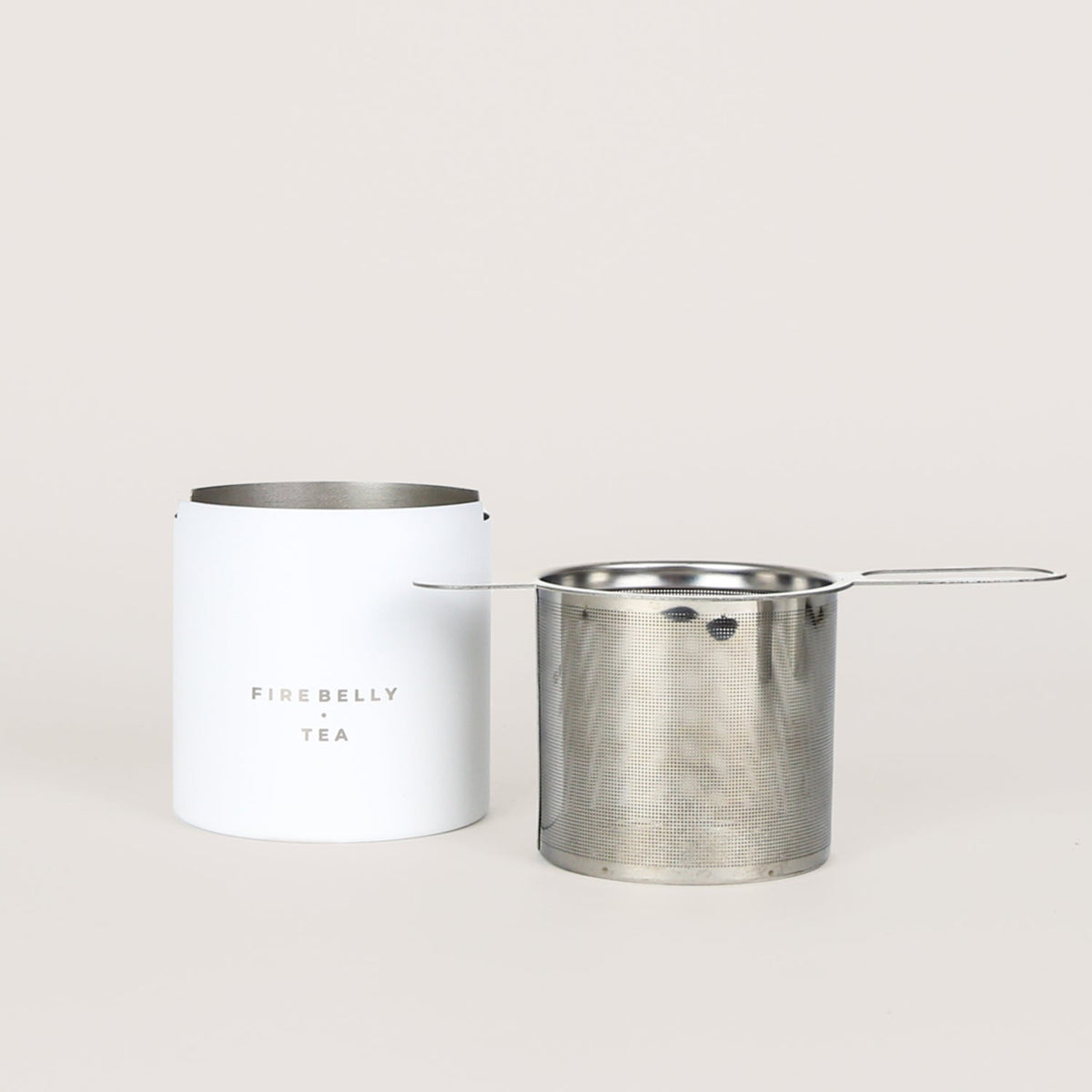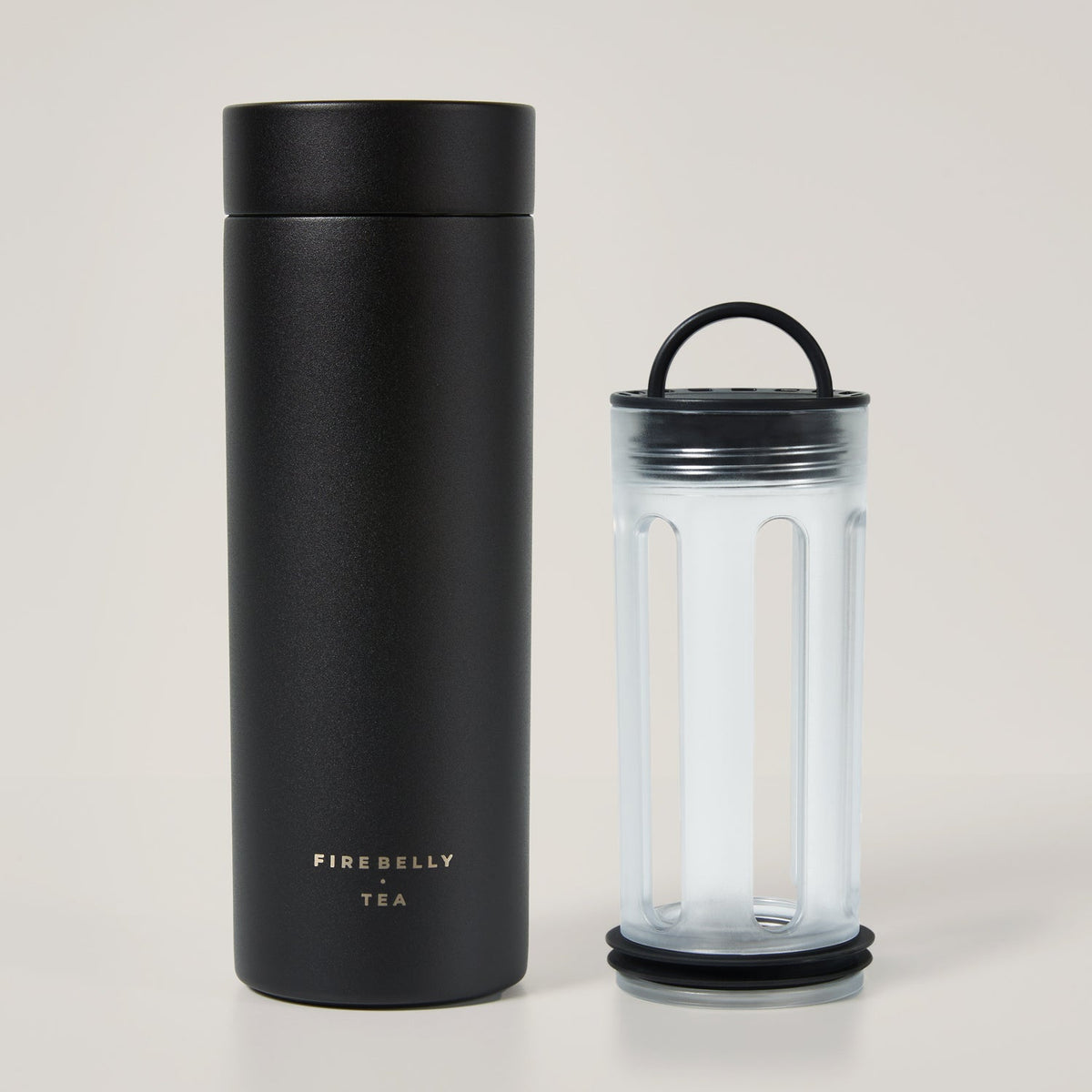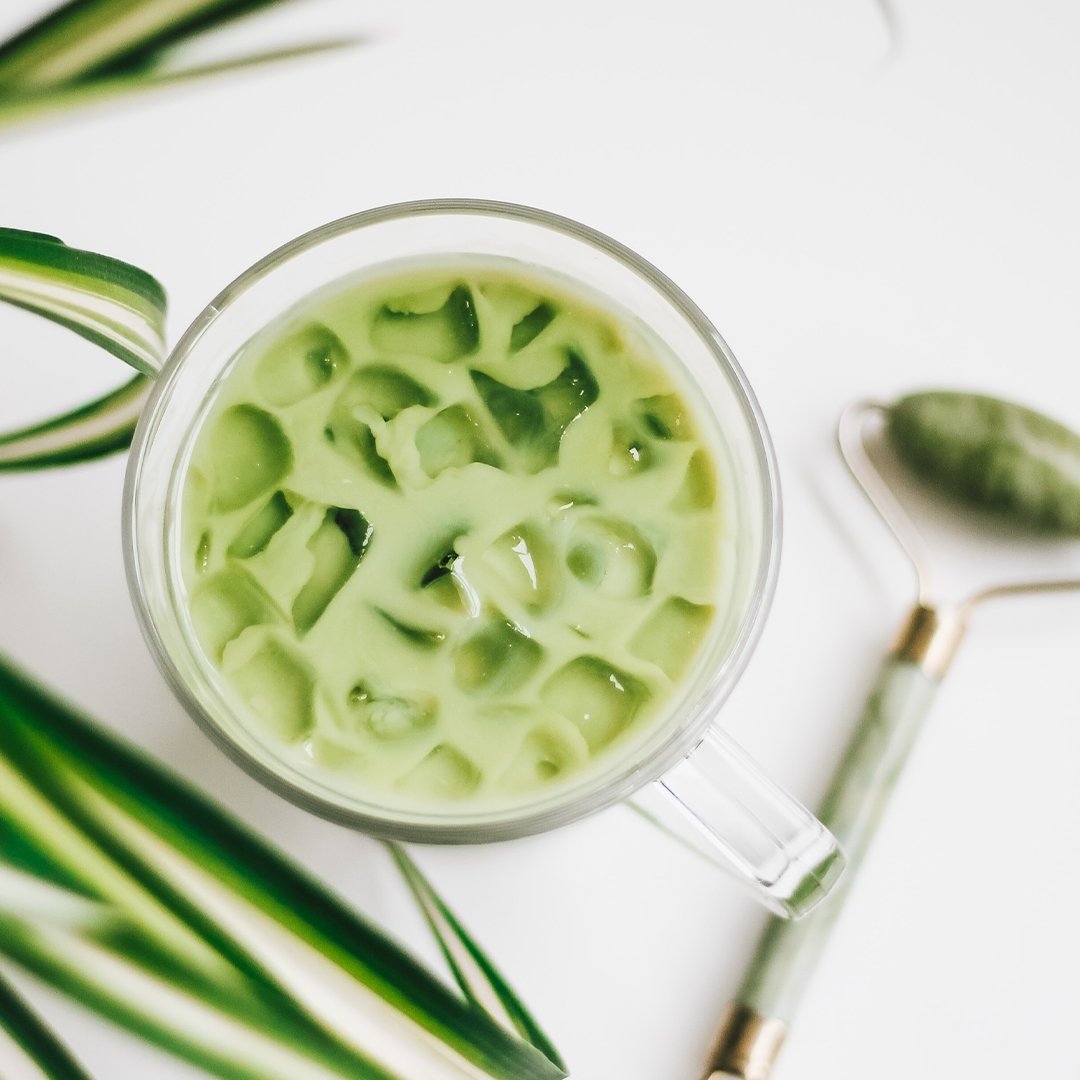Matcha (pronounced ma-cha) is a green tea powder. Like regular green tea, it comes from the Camelia Sinensis plant and has various health benefits, including high levels of antioxidants and other healthy compounds. Although it is a type of green tea, matcha is quite different from traditional green tea in how tea manufacturers grow and process it and in how tea lovers prepare and drink it.
Color is one of the first ways to tell the quality of a matcha. The vibrant green color of ceremonial-grade premium matcha comes from chlorophyll. These levels are very high because the plant is shade-grown for three weeks. Farmers harvest the green tea leaves and remove the stems and veins. Not all products being marketed as "matcha" have had the stems and leaves removed, but this is a critical step in order to classify as true matcha. After this, the leaf is stone-ground into a fine powder - ready to whisk into warm water and drink. Instead of steeping tea leaves and drinking an infusion, consuming matcha means consuming the entire leaf.
Recently, matcha has become even more popular than traditional green tea for its tremendous health benefits, creamy texture, and earthy flavor. But did you know that there's even more to this wonderful green tea powder? Here are some interesting facts you may not have heard before.
#1. Matcha Was Created by Accident
In the history books, you'll read that Chinese people brought matcha to Japan around the end of the 12th century, but this is not entirely accurate. At the time, matcha was an altogether different product. Preparing matcha then meant simply roasting and grinding green tea leaves.
The matcha tea we know today only came into existence when tea farmers accidentally invented Oishita cultivation, which means it is shade-grown. The process created a powdered green tea with a vibrant green color and a richer taste.
During a harsh winter, Japanese tea farmers accidentally discovered a new way to grow the Camellia Sinensis when they had to cover their tea plants with straw and reed structures to prevent frost damage. The shading, and lack of sunlight, made the plants produce more chlorophyll in new shoots for enhanced photosynthesis.
After hand-picking and processing the young buds with their deep color, the farmers were amazed at the richer, creamier powdered tea and continued producing it this way.
#2. It's The Only Suspension Tea in The World
Matcha tea is 100% unique! Instead of using leaves as you do with other green teas, matcha tea comes in fine powder form. You use a matcha whisk to whisk the powder into hot water, suspending it. Since matcha green tea powder is not soluble, you should drink it straightaway before the leaf particles settle at the bottom of the cup.
This unique characteristic makes matcha green tea the only suspension tea in the world! It also means that you'll get higher quantities of the fantastic health benefits of matcha, including the high levels of antioxidants and catechins.
#3. The Brewing Water Temperature Affects Matcha's Taste
Three key elements make up your matcha tea's flavor profile:
-
Theanine
-
Catechin
-
Caffeine
The theanine in matcha green tea gives it a sweet, mellow flavor. The catechin content adds an astringent flavor, and its caffeine adds a bitter undertone to the taste.
Because the brewing process extracts at different temperatures, you can calibrate the flavor profile by adjusting the hot water temperature you use in your brew. Theanine is extracted equally well at various temperatures, but catechins and caffeine are best extracted at slightly higher temperatures.
If you want a mellower, softer flavor, ensure your hot water is under 149 °F. It will extract more theanine and less catechin and caffeine. We recommend a temperature of 158°F for the most flavorful, balanced cup. You can also experiment with matcha lattes, where you will add frothed milk to your frothed matcha. Either way, you'll still get all the nutritional properties.
#4. Matcha is Even Healthier Than Regular Green Tea!
Most people know about the excellent nutritional benefits of traditional green tea and the high levels of antioxidants, amino acids, and other healthy compounds it contains. However, not everyone knows that matcha has even more nutritional value.
When you consume matcha, you get the entire leaf in, unlike other teas that you steep, for example, black tea. So you get all the nutritional content and benefits like lowered blood pressure, improved heart health, weight loss, and improved liver function. Matcha contains up to 15% more amino acids than other green teas. While one cup of traditional green tea contains around 3mg of amino acids, an average cup of matcha contains close to a whopping 45mg!
Ceremonial-grade matcha has around ten times more antioxidant properties than green tea. According to researchers who ran the ORAC (Oxygen Radical Absorption Capacity" test, matcha green tea powder contains 1,348 antioxidant units per gram -125 times higher than spinach.
Matcha contains a significant amount of EGCG, a catechin that helps reduce inflammation, improve cognitive function, promote weight loss, and can help prevent cancer. Because farmers grow matcha using the shaded growth method, the plants produce more of the amino acid L-theanine than normal brewed green tea, providing an extra calming effect and making it easier to focus.
No wonder health food stores stock matcha green tea! The good news is that you won't even have to find a health food store to start including matcha green tea in your daily diet - you can order premium-grade Firebelly Japanese matcha tea online right here and have it delivered to your door. Premium grades are the highest quality with the best nutritional content.
It's worth noting that because you must consume the entire leaf, you can't use matcha in a tea bag and must get high-quality powdered green tea instead.
#5. Monks LOVE Matcha Tea
Matcha tea drinking is an ancient tradition. Zen Buddhist monks began including a matcha tea ceremony in their meditative practice centuries ago. They would start their meditation by using a traditional bamboo whisk to whip up their matcha and enjoy its effects.
Using a stimulant when meditating may sound strange, but matcha is not your average stimulant. It contains around a third of the amount of caffeine compared to coffee, and it's a different type of caffeine.
Even though one teaspoon of matcha contains around 70mg of caffeine, the type of caffeine is theophylline. Matcha powder contains higher quantities of theophylline than normal green tea because it is shade-grown.
Theophylline provides a more sustained and greater energy boost and won't make you anxious or give you a caffeine crash or increase your blood pressure temporarily like coffee does. Instead of the jittery effects of coffee, matcha makes you feel a calming euphoria that combines mental alertness and deep relaxation. It is a lasting feeling similar to being in a meditative state.
Besides theophylline, matcha tea also contains a rare amino acid called L-theanine, which promotes alertness and relaxation - and it contains natural antioxidants that can help reduce anxiety and instill a sense of calm.
#6. The Samurai Drink Matcha Before Battles
Back in the 13th century, Zen Buddhist monks shared their knowledge of the health properties of matcha with Samurai warriors. These fierce fighters learned that they could enjoy matcha before and after they went into battle.
In line with their strict code of conduct, the Samurai created the initial version of the Japanese tea ceremony. They performed the tea ceremony before the battle to help them mentally prepare for what was to come. During drawn-out skirmishes, the warriors enjoyed the increased endurance and energy matcha provides, and afterward, it helped them heal their wounds and deal with the mental strain of war.
#7. Matcha is Brain Food
Do you need to improve your cognitive function? Good news, matcha boosts brainpower! Matcha tea is filled with polyphenols and rich in amino acids, L-theanine, and a high concentration of antioxidants, making it excellent for improving alpha waves. When this happens, it improves focus and clarity. The caffeine in matcha tea helps you be alert but calm and allows you to maintain a connection with your sense of purpose.
A study on how combining L-theanine and caffeine affects cognitive function revealed that the participants could focus better and switch their attention from one task to another quickly and efficiently. The research also showed a boost in memory. Here's a blog explaining why matcha is an excellent supplement for your cognitive health.
So, next time you have to study, write an exam, or focus on a task that requires the power of your mind, forget about the coffee and enjoy a hot cup of matcha or a creamy matcha latte instead.
#8. Drinking Matcha Helps With Weight Loss
If you're struggling with weight loss, you'll be happy to know that one of the many health benefits of matcha is that it can help you to burn fat. Since it's high in the catechin EGCG, drinking matcha has thermogenic properties, which help with fat oxidation. Whether you're working out or resting, this compound helps burn calories.
Matcha also contains L-theanine and caffeine. When these two compounds are combined, it increases sustained energy and focus, making it easier to stick with a regular exercise regime as part of your weight loss plan. The antioxidants in matcha powder improve energy metabolism, which makes it even easier for your body to burn fat.
In a research trial, people were given a high dose of green tea extract or a placebo. Those treated with green tea extract experienced significant weight loss.
#9. You Can Tell Matcha's Grade by Its Color
Is your matcha blueish green or brownish yellow? High-grade Japanese matcha tea has a blueish-green hue, while brownish-yellow indicates a slightly lower grade. In Japan, matcha tea is classified by whether its color resembles pine tree green or bamboo green. Pine trees are a more vibrant green, while bamboo has a lighter green with a yellow tinge.
The brighter and more vibrant the green, the higher the grade of matcha. The premium grades of matcha with the most brilliant color are the product of a picking method called Niyou Tsumi (two-leaf picking), which involves gently picking the topmost, youngest pair of leaves on the stems of the tea plant.
#10. And by Its Aroma!
In Matcha terminology, the fragrance of premium-grade matcha is called "oika" aroma. It is a characteristically refreshing aroma that only shade-grown green tea has. Besides matcha, only one other type of Japanese green tea has a similar scent: high-quality gyukuro tea. The more buttery, captivating, and inviting the matcha's aroma is, the more inclined the tea drinker will be to enjoy their cup of matcha.
#11. Matcha Has a Mysterious 5th Flavor
If you've ever enjoyed premium-grade matcha, you will know it has a mysterious flavor that you can't quite describe as sweet, bitter, salty, or sour. That's because matcha is one of the few foods in the world with a wonderfully addictive and mysterious 5th flavor: umami.
The high concentration of glutamate, theanine, and ionone-related compounds creates this extraordinary umami flavor of high-grade traditional matcha powder. It is derived from the young shoots of the shade-grown Camelia Sinensis tea plant. When the plant is grown in any other way, it will contain significantly fewer nutritional properties and an entirely different flavor profile.
#12. Matcha is Sensitive to The Sun, Air, Heat, and Moisture
All green teas undergo minimal oxidation to remain closer to their original, pre-plucked, green state. After farmers pluck the leaves, they are de-enzymed to prevent further oxidation. It's the same concept as when an apple turns brown and tastes different after it's sliced and exposed to air.
Matcha is particularly susceptible to oxidation, which can happen because it's exposed to sunlight, moisture, air, and heat. It will change the powder's color and taste.
When you shop for matcha, ensure you buy matcha in airtight packaging that's not transparent, and store it in a cool and dry environment away from sunlight, moisture, and heat, especially after opening.
#13. Matcha Blends Are Given Poetic Names
Matcha tea producers and sellers have a quirky and interesting habit of giving matcha poetic-sounding names. It's a tradition called chamei, which translates to "tea name." When a grandmaster at a tea ceremony finds a particular blend pleasing, he will give it its chamei. The blend then becomes known as the grand master's konomi, a "butcher block of leaf."
#14. Dark Matcha Could be Over 100 Years Old
There is an exclusive variety of matcha called Dark Matcha, also known as Koicha. It is an important tea in the traditional Japanese tea ceremony. The original version of Dark Matcha was made from tea plants over 100 years old. However, making it from particular cultivars - usually more expensive varieties - has become acceptable in more modern times.
Some of the most expensive Dark Matcha cultivars are from tea leaves over 30 years old. What makes Dark Matcha so special is not only its exclusivity but also its taste. When you make matcha with older tea leaves, it's distinctly sweeter.
#15. You Can Do So Much More With Matcha Than Make Tea
Drinking matcha tea is much more than Japanese tea ceremonies and matcha lattes. It's a truly remarkable and versatile ingredient you can use in many ways. The traditional way is to add your matcha tea to a bowl, top it with hot water, and use a matcha whisk to whip it until it's creamy and frothy. You can get everything you need for this method right here.
If you don't like matcha tea this way, you can make a matcha latte or use it as an ingredient in other foods. Here are some examples:
-
Make an iced matcha tea by using less hot water and then topping it up with cold water and ice cubes. If you want to, you can sweeten it slightly with a natural sweetener like stevia.
-
Blend the powder into your morning smoothies.
-
Make a matcha latte with coconut milk or almond milk for a vegan treat.
-
Substitute a little of the flour in a recipe to bake matcha-infused muffins or cakes or make matcha pancakes or waffles.
-
Add it to your morning oatmeal or smoothie bowl.
-
Make matcha ice creams with other superfoods like goji berries or blueberries for extra antioxidant properties.
Once you start experimenting with matcha, you'll be amazed at how easy it becomes to incorporate this superfood into your daily diet.
Matcha Green Tea
With the incredible health benefits of matcha, its earthy flavor, creamy texture, and delicate umami taste, matcha is an exceptional treat. You only need one cup a day to begin feeling the powerful effects of the antioxidants it contains! However, using premium-quality matcha tea for the best benefits and flavor is crucial - not all matcha is equal.
Some commercial matcha powders and matcha lattes in coffee shops contain milk, sweeteners, and even unhealthy fillers, coloring, and other ingredients. You won't know how much caffeine or sugar it has or if it is healthy. It's best to avoid this and choose a pure, premium matcha powder like Firebelly Tea's "All Matcha" for the best taste and nutritional properties.
